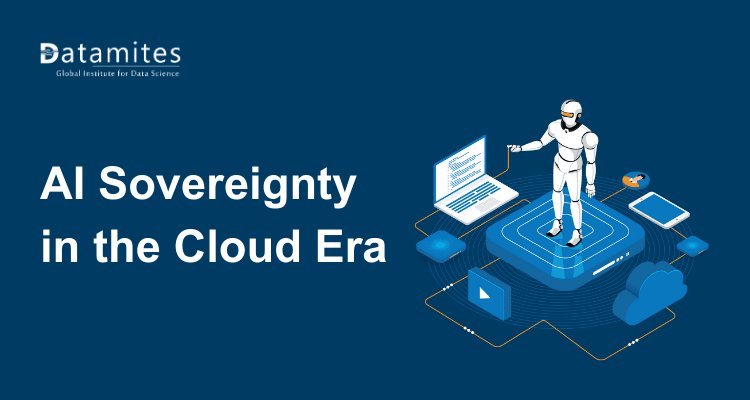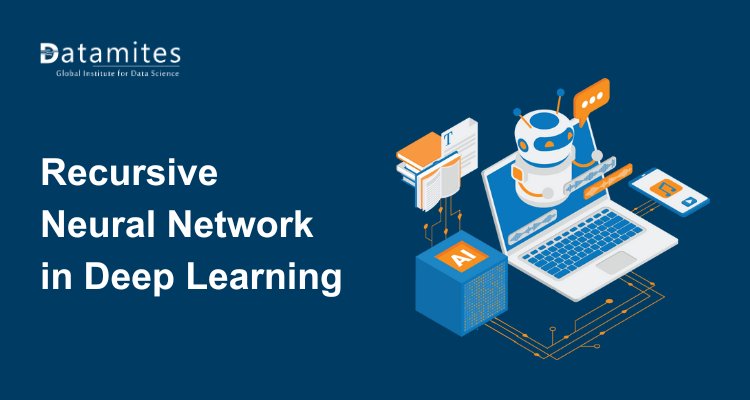25 Essential Machine Learning Interview Questions
Prepare for your next machine learning interview with these 25 essential questions, covering key concepts, algorithms, and best practices. Master the fundamentals and boost your confidence with expert insights.

Machine Learning is a hot topic that is popping up pretty much when we scroll through the news feed. Either they talk about the big job opportunities awaiting in Artificial Intelligence and Machine Learning or how many organizations are already successful by implanting the same.
What is Machine Learning?
Machine learning is a subset of artificial intelligence (AI) that gives systems the ability to learn and improve from experience without human intervention. Machine learning focuses on developing intelligent computer programs that use algorithms and statistical models to access data as well as use it to learn for themselves.
Shall we now dig into 25 essential Machine Learning Interview Questions and answers for them?
1) Talk about the Different Types of Machine Learning and explain them?
Machine Learning is divided into Supervised Learning, Unsupervised Learning, and Reinforcement Learning.
Supervised Learning: When we consider supervised machine learning, where the model makes its predictions or decisions based on past or labeled data. Labeled data denotes sets of data that are given tags or labels, and thus made more meaningful.
Unsupervised Learning: In unsupervised learning, the model can identify patterns, anomalies, and relationships in the input data however there is no labeled data.
Reinforcement Learning: Reinforcement learning is all about how a model can learn based on the rewards it received for its previous action.
2) Can you talk about what Confusion Matrix is all about?
A confusion matrix is a technique used in machine Learning for summarizing the performance of a classification algorithm. It is also called as an error matrix, and calculating this matrix helps you to gain a better idea of what your classification model is getting right and what are the errors that it is making. Talk about overfitting and how to avoid one?
3) If there is missing or corrupted data in a Data Set, how do you handle one?
If there is missing or corrupted data in a Data Set, the easiest way to handle it is by dropping those rows or columns or replacing them entirely with some other value.
The two most useful methods in Pandas are:
IsNull() and dropna() helps in finding the rows/columns with missing data and dropping them
Fillna() helps by replacing the wrong values with a placeholder value
4) Can you talk about choosing a Classifier Based on a Training Set Data Size?
When we have a small training set, we have to choose a model that has a right bias and low variance, since it seems to work better because they are less likely to overfit.
For example, we can choose the Naive Bayes when the training set is large. Models with low bias and high variance tend to perform better as they work fine with complex relationships.
5) Can you talk about Deep Learning?
Deep learning is a subset of machine learning involving artificial neural networks that think and learn like humans. There are several layers of neural networks bundled together that is why the term “Deep” is used. While engineering is done manually in machine learning, in Deep learning the model consisting of neural networks will automatically determine which features to use and which not to use.
6) Can you explain about Overfitting and how one can avoid it?
We all know that in Machine Learning, a model learns the training set and what happens when there is a situation where the model learns the training set too well by considering the random fluctuations too as concepts. This in turn negatively impacts the performance of the model on new data. So, in this situation when the model is provided with training data it delivers 100 percent accuracy and technically, a slight loss. However, when the test data is used, there occurs an error and low efficiency and this is known as overfitting.
There are different ways to avoid overfitting, and they are:
Make a simple model that comes with lesser variables and parameters which results in a reduced variance.
Using Regularization, involving the cost term for the features with the objective function
Usage of Cross-validation methods like k-folds
In case, overfitting is caused by some model parameters then techniques for regularization such as LASSO comes beneficial as it penalizes these parameters
7) Can you explain about the Stages of Building a Model in Machine Learning?
While building a model in Machine Learning, there are three stages involved and they are Model Building, Model Testing, and Applying the Model.
In Model Building, we pick a suitable algorithm for the model and start training it as per the requirement.
In Model Testing, the accuracy of the model has been checked by using the test data.
Applying the Model is the stage where the required changes are made after testing and start using the final model for real-time projects. Also, it is essential to check the model once in a while to make sure it’s working correctly and make modifications so that it stays up-to-date.
8) Explain Semi-supervised Machine Learning?
In Supervised Machine learning, that data is labeled completely whereas in Unsupervised learning no training data is used at all. In the case of semi-supervised learning, there is a small amount of labeled training data and a large amount of unlabelled training data has been used.
9) Can you quote a few Applications of Supervised Machine Learning in the Modern world Businesses?
There are immense applications to quote of Supervised Machine Learning in the Modern world Businesses and they are:
Diagnosing a disease in Healthcare: When you train a model by providing images regarding a disease, it can be trained to if a person is suffering from that disease or not.
Spam Detection in E-mail: We feed the historical data that consists of emails categorized as spam or not spam and then train the model.Fraud Detection: Identifying suspicious patterns by training a model can help to detect instances of possible fraud.
Sentiment Analysis: Algorithms are used to mine documents and determine whether they’re positive, neutral, or negative in sentiment.
10) Can you Compare K-means and KNN Algorithms?
K-Means is an unsupervised and a clustering algorithm. Here, the points in each cluster are similar to each other however each cluster is different from its neighboring clusters.
KNN is a classification algorithm that is supervised in nature. It classifies an unlabeled observation based on its K surrounding neighbors.
11) How Will You Decide on Which Machine Learning Algorithm to pick for Your Classification Problem?
Deciding on which Machine Learning Algorithm to choose for a classification problem doesn’t come with fixed rules instead there are possibly few guidelines to choose and they are:
When your training dataset is small, it is better to prefer models that have low variance and high bias
If accuracy is a concern, it is essential to test different algorithms and cross-validate them
If the training dataset is large, better to prefer models that have high variance and little bias
12) Can you explain Random Forest?
A supervised machine learning algorithm, which is generally used for classification problems that operate by constructing many decision trees during the training phase is Random Forest. Also called as Random decision forest, it chooses the decision of the majority of the trees as the final decision.
13) Can you talk about the Recommendation System?
It is actually an information filtering system that predicts user preference based on choice patterns provided by the user. Amazon is a famous example of using a recommendation system. When you shop at Amazon, you can see recommendations of what you might want to hear or see popping up which was created Recommendation System based on your searches and purchases.
14) What Is Kernel SVM?
Kernel methods are actually a class of algorithms for pattern analysis, and in that, kernel SVM is the most commonly used one. Kernel SVM is also called a kernel support vector machine.
15) Can you suggest some Methods for Reducing Dimensionality?
Dimensionality reduction could be done by using algorithmic dimensionality reduction, combining features with feature engineering, or by removing collinear features.
16) Talk about Logistic Regression.
When there is a given set of independent variables and if we want to predict a binary outcome for them, we use a classification algorithm and that is called Logistic regression.
In logistic regression, the outcome values are either a 0 or 1 with a threshold value of 0.5. Any value that is above 0.5 is considered as 1, and any point that comes below 0.5 is considered as 0.
17) Can you define Precision and Recall?
Precision, in other words, positive predictive value, is the fraction of relevant instances among the retrieved instances. Precision = (True Positive) / (True Positive + False Positive)
Recall, in other words, Sensitivity is the fraction of the total amount of relevant instances that were actually retrieved. Recall = (True Positive) / (True Positive + False Negative)
Both precision and recall are therefore based on an understanding and measure of relevance.
18) Talk a few words about Bias and Variance in a Machine Learning Model.
Bias, actually occurs when there is a difference between the average prediction of our model and the actual value which we are trying to predict. Low bias means the prediction values are very close to the actual ones. A model with High bias oversimplifies the model and cause an algorithm to miss the relevant relations between features and target outputs.
Variance refers to the variability of a model when trained with different training data and for a good model, the variance is always minimized. A model with high variance can cause a random noise in the training data rather than the intended outputs.
19) Can you Design an Email Spam Filter?
We can build an email spam filter with the following steps
First, feed the email spam filter with lots of emails
The emails which are fed to the filter already comes with a label: ‘spam’ or ‘not spam.’
Now, it is learning time for the supervised machine learning algorithm. It will analyze which type of emails are being marked as spam based on spam words like the free offer, lottery, no money, full refund, etc.
The next time an email arrives, the spam filter will utilize the statistical analysis and algorithms such as Decision Trees and SVM to find out how likely the email is spam.
If the likelihood is high, the spam filter will label it as spam, and the email will be forwarded to the spam folder instead of your inbox.
Based on the accuracy of each model, we will use the algorithm with the highest accuracy after testing all the models.
20) Can you explain the difference between L1 and L2 regularization?
What does L2 regularization do is it spreads error among all the terms whereas L1 regularization is more binary/sparse, with many variables either being assigned a 1 or 0 in weighting. L1 correlates to setting a Laplacean prior on the terms, while L2 correlates to a Gaussian prior
21) Can you explain the difference between a generative and discriminative model?
If a model learns categories of data then it is a Generative model whereas is a model simply learns the distinction between different categories of data, then it is a Discriminative model. Generally, Discriminative models will outperform generative models on classification tasks.
22) Can you talk about the F1 score and How do you use it?
The F1 score is defined as a measure of a model’s performance. A weighted average of the precision and recall of a model is calculated and if the results are tending to 1 then it is the best, and those tending to 0 are marked as worst. It is used in classification tests where true negatives are not mattered much.
23) Can you explain the difference between Entropy and Information Gain?
Entropy is an indicator that shows how messy your data is and it decreases as you got closer to the leaf node. Whereas, the Information Gain is depending on the decrease in entropy after a dataset is split on an attribute. It keeps on increasing as you go near the leaf node.
24) Can you tell us the main benefit of Naive Bayes?
The major benefit of a Naive Bayes classifier is that it converges very quickly as compared to other models such as logistic regression. Hence, we need less training data in case of naive Bayes classifier
25) Explain the Difference Between Inductive Machine Learning and Deductive Machine Learning?
In Inductive Learning, it usually observes instances based on defined principles to come to a conclusion. For Example: When you explain a child to be cautious and keep away from the fire by showing a video where the fire is causing damage.
In Deductive Learning, it concludes the experiences. For Example: When you allow a child to play with fire and if it gets burnt, the child will learn that it is dangerous and will refrain from that.
These 25 essential Machine Learning Interview questions and answers would be of great benefit for your interview preparation.
Why DataMites™ for Machine Learning Course?
The world around us is changing and so are the machines. We have digitalized all our needs ranging from ordering food to booking a doctor appointment. Technology is evolving and it is fast approaching the endless peak of digitalization where Machines have started learning and reasoning without our help.
When the technology is traveling at the lightning speed why do you still buckle up yourself to old and weary techs which will soon fade away??? It is the perfect time for young grads and professionals to choose the booming Machine Learning career.
So….hoping to land on your first Machine engineer job successfully???
DataMites™, accredited by the International Association of Business Analytics Certifications (IABAC) who is offering Machine Learning courses that helps you to successfully transform into an industry-ready Machine learning professional. Be an out of box thinker backed with strong knowledge and stamp a trademark in your New Career with a certification from DataMites™.






